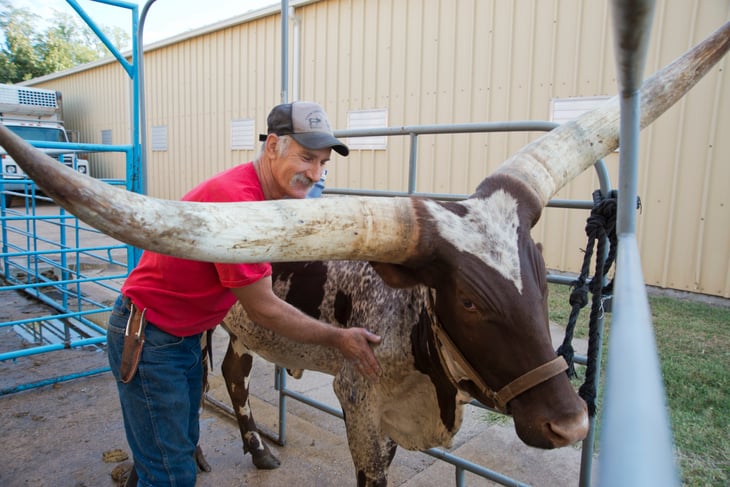
Editor's Note: This story originally appeared on Construction Coverage.
One of the concepts that the COVID-19 pandemic brought to the forefront of the public imagination is the idea of an “essential worker.” The pandemic highlighted that many professions are critical for allowing the rest of the economy and society to function properly, especially in a time of crisis.
Some essential professionals like health workers and teachers were already held in high regard, but COVID-19 put a new spotlight on workers in oft-overlooked industries like grocery, elder care, and shipping and logistics.
Of course, the reason why these professions have drawn attention is the fact that workers in these fields kept working despite higher risks of virus exposure in the course of doing their jobs. Early on in the pandemic, many people were easily able to transition to working remotely, while many others saw their jobs eliminated or hours reduced as a result of COVID-19’s economic shocks. But essential workers mostly continued working in-person, all the while confronting the greater possibility of contracting COVID-19.
These varying experiences of COVID-19 across professions reflect the larger fact that every job has different levels and types of risk inherent in the work. Professions that involve manual labor or interacting with tools and machinery tend to be among the most prone to injury and illness, but no job is perfectly safe. Fortunately, however, the U.S. has seen positive trends in reducing the number and severity of work-related injuries and illnesses in recent years.
To identify the industries with the highest rates of workplace injuries, researchers at Construction Coverage collected data from the Bureau of Labor Statistics, including each industry’s total number of cases per 100 workers, cases resulting in missed days or job transfer/restrictions, median wage, and total employment. Industries were ranked by the total number of cases per 100 workers.
Here are the industries with the highest rates of workplace injuries.
15. Beverage and Tobacco Product Manufacturing

- Total cases (per 100 workers): 4.3
- Cases with days away from work (per 100 workers): 1.3
- Cases with days of job transfer/restriction (per 100 workers): 1.6
- Other cases (per 100 workers): 1.4
- Median annual wage: $38,680
- Total employment: 282,110
14. Primary Metal Manufacturing

- Total cases (per 100 workers): 4.4
- Cases with days away from work (per 100 workers): 1.2
- Cases with days of job transfer/restriction (per 100 workers): 1.5
- Other cases (per 100 workers): 1.7
- Median annual wage: $44,520
- Total employment: 385,910
13. Fishing, Hunting, and Trapping

- Total cases (per 100 workers): 4.6
- Cases with days away from work (per 100 workers): 2.3
- Cases with days of job transfer/restriction (per 100 workers): N/A
- Other cases (per 100 workers): 1.5
- Median annual wage: N/A
- Total employment: N/A
12. General Merchandise Stores

- Total cases (per 100 workers): 4.6
- Cases with days away from work (per 100 workers): 1.2
- Cases with days of job transfer/restriction (per 100 workers): 1.6
- Other cases (per 100 workers): 1.8
- Median annual wage: $25,310
- Total employment: 3,129,540
11. Warehousing and Storage

- Total cases (per 100 workers): 4.8
- Cases with days away from work (per 100 workers): 1.9
- Cases with days of job transfer/restriction (per 100 workers): 1.7
- Other cases (per 100 workers): 1.2
- Median annual wage: $36,170
- Total employment: 1,214,230
10. Building Material and Garden Equipment and Supplies Dealers

- Total cases (per 100 workers): 4.9
- Cases with days away from work (per 100 workers): 1.6
- Cases with days of job transfer/restriction (per 100 workers): 1.7
- Other cases (per 100 workers): 1.6
- Median annual wage: $29,830
- Total employment: 1,311,670
9. Support Activities for Agriculture and Forestry

- Total cases (per 100 workers): 5.2
- Cases with days away from work (per 100 workers): 1.8
- Cases with days of job transfer/restriction (per 100 workers): 1.5
- Other cases (per 100 workers): 1.9
- Median annual wage: $26,430
- Total employment: 382,330
8. Crop Production

- Total cases (per 100 workers): 5.3
- Cases with days away from work (per 100 workers): 1.4
- Cases with days of job transfer/restriction (per 100 workers): 1.6
- Other cases (per 100 workers): 2.2
- Median annual wage: N/A
- Total employment: N/A
7. Hospitals

- Total cases (per 100 workers): 5.5
- Cases with days away from work (per 100 workers): 1.3
- Cases with days of job transfer/restriction (per 100 workers): 0.9
- Other cases (per 100 workers): 3.3
- Median annual wage: $58,210
- Total employment: 6,094,940
6. Animal Production and Aquaculture

- Total cases (per 100 workers): 5.6
- Cases with days away from work (per 100 workers): 2.1
- Cases with days of job transfer/restriction (per 100 workers): 1.3
- Other cases (per 100 workers): 2.1
- Median annual wage: N/A
- Total employment: N/A
5. Nursing and Residential Care Facilities

- Total cases (per 100 workers): 5.9
- Cases with days away from work (per 100 workers): 1.7
- Cases with days of job transfer/restriction (per 100 workers): 1.8
- Other cases (per 100 workers): 2.4
- Median annual wage: $30,370
- Total employment: 3,351,090
4. Performing Arts, Spectator Sports, and Related Industries

- Total cases (per 100 workers): 6.0
- Cases with days away from work (per 100 workers): 1.4
- Cases with days of job transfer/restriction (per 100 workers): 1.9
- Other cases (per 100 workers): 2.7
- Median annual wage: $37,330
- Total employment: 519,810
3. Wood Product Manufacturing

- Total cases (per 100 workers): 6.1
- Cases with days away from work (per 100 workers): 1.8
- Cases with days of job transfer/restriction (per 100 workers): 1.7
- Other cases (per 100 workers): 2.6
- Median annual wage: $34,260
- Total employment: 406,100
2. Air Transportation

- Total cases (per 100 workers): 6.5
- Cases with days away from work (per 100 workers): 3.7
- Cases with days of job transfer/restriction (per 100 workers): 1.5
- Other cases (per 100 workers): 1.2
- Median annual wage: $62,480
- Total employment: 498,830
1. Couriers and Messengers

- Total cases (per 100 workers): 8.1
- Cases with days away from work (per 100 workers): 3.3
- Cases with days of job transfer/restriction (per 100 workers): 2.8
- Other cases (per 100 workers): 2.1
- Median annual wage: $36,890
- Total employment: 796,660
Detailed Findings & Methodology

To find the industries with the highest rates of workplace injuries, researchers analyzed data from the Bureau of Labor Statistics’ Survey of Occupational Injuries and Illnesses. Incidence rates represent the number of injuries and illnesses per 100 full-time workers. The analysis is of private industry subsectors only (three-digit NAICS code industry levels). Only industries with sufficient data were included in the analysis. Wage and employment data came from the Bureau of Labor Statistics’ Occupational Employment Survey.





Add a Comment
Our Policy: We welcome relevant and respectful comments in order to foster healthy and informative discussions. All other comments may be removed. Comments with links are automatically held for moderation.